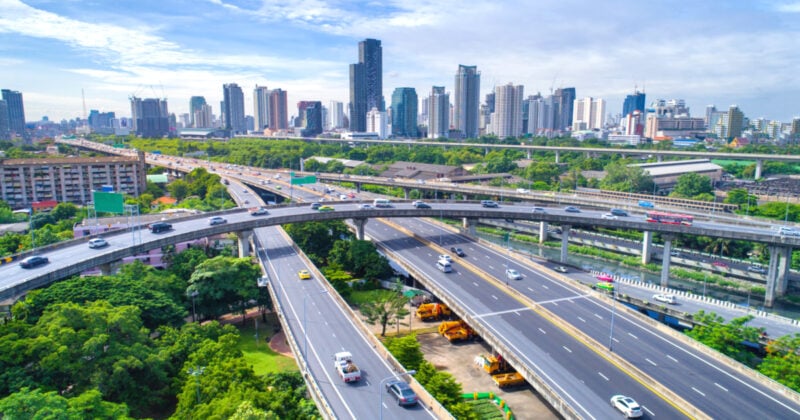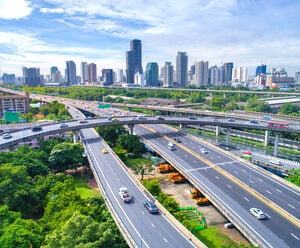新冠疫情之後公路貨運正在走向更加光明的未來

根據敦豪新發布的一份白皮書,新的貿易舉措、電子商務需求激增、新冠疫情后經濟有望反彈和其他貨運模式的波動,正在為東南亞國家聯盟(東盟)地區跨境卡車運輸和多式聯運解決方案創造理想的條件。
東盟經濟共同體(AEC)的成員國長期以來一直敦促海關官員加強一體化和連通性,以方便各公司在該地區擴大其業務。他們所做的努力正在為國際公路貨運解決方案開闢新的貿易路線和機會。
“亞洲大部分地區是通過陸地接壤。貨車運輸服務對於那些正在發展供應鏈以滿足新冠疫情后物流需求的客戶來說,是一項經濟實惠、高效的解決方案,”敦豪全球貨運東南亞地區首席執行官Thomas Tieber表示。
正如白皮書中所強調的,全球航運能力和設備稀缺,以及高昂的空運成本,進一步提高了貨車運輸方案的吸引力,因為貨車運輸不但安全,而且能夠為托運人提供門到門的貨物可見性。
“各國政府也一直採取措施改善邊境基礎設施,調整海關規定和文件。隨著這些瓶頸的消除,與空運或海運相比,依賴貨車跨境自由出入的公路和多式聯運解決方案可能成為首選的貨運方式,” Tieber說。
利用技術在提高公路貨運效率方面也發揮著關鍵作用。支撐敦豪在這一領域的技術支柱的是myDHLi 數字門戶網站。通過這個網站,客戶可以快速查看即時和有競爭力的報價、預訂情況和貨物跟踪信息。此外,客戶還可以監測排放量和貨物的可視性,並分析物流支出、貨運量、海關活動和服務質量。
對於包括敦豪在內的公路貨運供應商而言,將貨車運輸專業知識與技術使用相結合,同時掌握最新的貿易法規和市場趨勢,對於他們在該地區取得成功至關重要。
推動無縫的跨境貿易
過去一年,公路貨運行業所取得的最重要的一項發展就是實施了東盟海關過境系統(ACTS)--這是一種計算機化的海關過境管理系統,允許持牌經營者使用單一文件跨境運輸貨物,而無需對進出該國的貨物支付關稅和稅款。
東盟海關過境系統於2020年在柬埔寨、老撾、馬來西亞、新加坡、泰國和越南推出,其設計符合東盟的目標,即從2017年起在三年內將貿易交易成本降低10%,並在2017年至2025年期間將東盟內部的貿易量增加一倍。
敦豪全球貨運東南亞地區公路貨運和多式聯運主管Bruno Selmoni表示,“東盟海關過境系統將會隨著時間的推移降低成本,同時通過協調針對不同成員國強制實施的跨境監管程序和標準,提高東盟地區公路貨運的效率和可靠性。
商業用戶可以通過東盟海關過境系統直接向東盟海關當局提交電子過境申報單,並跟踪貨物從出發地裝貨到最終目的地的運輸情況。由於經營者不再需要在每個邊境進行報關,東盟海關過境系統將省去行政手續並節省成本,同時開闢新的、更具競爭力的區域內貿易通道。
對於尋求在新冠疫情后重新配置供應鏈的公司來說,東盟海關過境系統的推出正是時候。 Selmoni說:“那些希望從中國實現生產多樣化以降低風險並提高供應鏈靈活性的企業,現在有了完善的公路物流網絡,可幫助他們在東南亞建立區域供應鏈。”
其他舉措也一直在推進區域內貿易的發展。
例如,大湄公河次區域(GMS) 跨境運輸便利化協議(CBTA)允許柬埔寨、中國、老撾、緬甸、泰國和越南六個成員國針對在該國登記、持有及或/經營的貨運車輛和乘用車輛簽發高達500份 GMS 公路貨運許可證和臨時准入證(TAD)。根據2015年簽訂的協議,臨時准入證將允許每台車輛在該國停留30天。
與此同時,自2010年生效以來,中國-東盟自由貿易區促進了東南亞與中國之間的貿易增長,而15個成員國簽訂的《區域全面經濟夥伴關係協定》(RCEP)有望改善市場准入並促進在約佔全球GDP三分之一的東盟共同體的投資。
所有這些協議和舉措都將促進經濟增長和貿易,正如東盟國家所願,希望從新冠疫情封鎖中復蘇。
經濟復甦有利於物流
研究機構-運輸情報顧問公司(Ti)表示,交易量激增和經濟活動復甦將帶來相應的物流和公路貨運增長和需求。
該顧問公司預計,從2020年到2025年,亞太區實際的合同物流需求增長將為7.6%,今年整個地區的需求預計增長8.2%。
在中美貿易戰和政府大力支持等因素的驅動下,該地區快速發展的新興市場如印尼和越南,製造業越來越強大,從長遠來看,這將有可能推動需求增長。
與此同時,電子支付技術公司PPRO新發布的一份報告預測稱,2021年東南亞電子商務將增長5.5%,明年,新加坡、馬來西亞、印度尼西亞、菲律賓和越南在東南亞地區的市場增長將名列前茅。
特別是企業對企業(B2B)銷售,預計到2027年,線上交易量將激增70%,達到20.9萬億美元(17.6萬億歐元),這將保持未來幾年對公路貨運解決方案的強勁需求。
Tieber表示:“隨著新冠疫情后經濟的強勁復甦,電子商務消費支出不斷上漲和貿易限制縮減,東南亞地區跨境卡車運輸的未來充滿希望。”
“我們將繼續推出與客戶合作開發的該地區領先的公路和多式聯運解決方案,因為我們在全力以赴地為未來十年沒有疫情(但願如此)影響的商貿業務做準備。”










 繁體中文(香港)
繁體中文(香港)